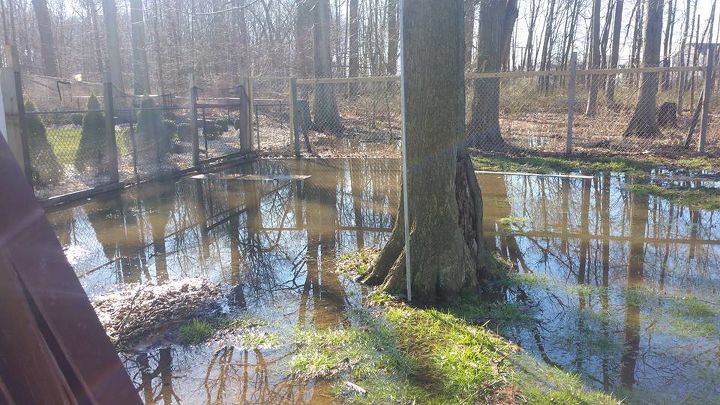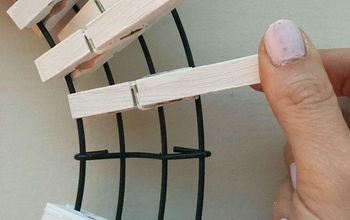How do I better utilize my backyard?

Related Discussions
GNATS - How to get rid of them?
Somehow my house and garden got tiny gnats that killed my fuchsia plant and fly everywhere. I have tried ALL the Web recommendations - soap and oil dishes, sand in th... See more
Marigolds growing! Should I pinch the buds?
My marigold plants are growing. I heard that pinching the buds until Autumn will allow them to grow without killing the plant. Is this true?
Growing garlic
Growing our first garlic, should we wait until the leaves are drying out before we pick it? Husband picked first one today along with our first potatoes.
How to keep mice out of your garden?
Hi everyone, I have mice in my garden destroying my vegetables and I have also noticed them in the barn and shed. Please can someone tell me how to prevent them from ... See more
What's the best flower/plant to grow in Texas?
I know that opinions vary, but what's your opinion?!I have great luck w Rosemary plants. Green all year long.
Do concrete ponds normally hold water? Discovered in my backyard filled with dirt! Should I seal it w something?
It is probably from the 30's - 50's and is currently filled with dirt. I am planning on digging it out, and getting it running by next year. It looks to be concrete ... See more
What can I do about Standing water in my backyard?
hello, i have an area in my backyard ( wetlands ) that fills with standing water making it a mosquito breeding ground .. can anyone suggest help here ?? Oh this all s... See more





Having basement flooding is no fun when your problem becomes reoccurring. We had to address it with interior French drains into 2 sump pump’s due to our sloping landscape.
Always be sure your gutters are clean, unobstructed and draining. Another suggestion is to divert all the water away from your foundation perimeter. Extending gutters can help greatly when basement flooding is a threat or your slope is not helpful draining rain water away from your house perimeter.
As for slopes are creative ways to deal with this to make usable space. Houzz and Pinterest are helpful to visually collect the ideas, here are some ideas that I have saved.
I have the same problem. Try regarding the yard, so it slops away from the house. Also if you can find plants that love water and plant. What I am considering is getting a 10 x 10 gazebo. Possibly adding pavers to the post to level it and weights to help to secure it. In the center of the patio I want to add 18"x18" pavers to define the space. The pavers will be separated by one inch. Check out interest for ideas.
PInterest for ideas.
have no idea but guessing, in winter time, there is only little rain. in spring, more rain but soil still frozen, so water can not get in. in summer and fall, water can get in to the soil faster.
Your yard slopes from left to right. If you have any problem with water accumulation it's not coming from the pictured yard. It's your downhill neighbors who perhaps get swamped during a downpour. If you change the grade of your yard it should be to adjust the swale in the center of your picture so it moves back and forth across the yard. Try to direct the runoff to the far right corner of your photo.
On the down hill side of your yard I would plant some flowering shrubs. Unless you want a hedge, the shrubs can be mixed—taller and shorter, evergreen and deciduous. Some will bloom in spring or summer; others will bloom late summer into fall. Be sure to space them according to their mature spread. If a shrub will be 8 ft wide at maturity plant it 4 ft from the fence and 4 ft from any other plant. For now, plant some medium to tall annuals to fill in between.
In front of the shrub border I would use perennial ornamental grasses. This is because all the runoff from this yard ends up at the fence. Grasses will hold the soil better than a flower garden alone. Plant the grasses in an offset pattern. Evergreen grasses should not be cut back; certainly never cut them back more than 1/3. Deciduous grasses should have dead leaves and stems removed in late winter, but no later than February, to make way for new leaves.
Mulches recommended for areas receiving runoff should be either heavy bark chunks or shredded wood that mats together. Do no mulch to the base of any plant. In southern states, especially, this can damage the stem and lead to disease. You will still need to look for weeds and remove them as you find them.
You can put a similar bed on the uphill left side of your yard. A low raised border edging will give you level space, but make a note of where water runs from uphill. It would be advisable to put in a spillway for heavy flows so your border isn't washed out in a heavy rain. Don't underestimate the weight and power of even small flows of water.
I don't think you should try to put a flower or shrub bed against the woods. Mowing is what is keeping those woods at bay.
Here is a link to recommended native plants for Tennessee: https://www.se-eppc.org/pubs/TNALT.pdf You can save it to your computer for later reference. Instead of using the exotic species on the left of the chart, choose one of the Native Plant Alternatives. They will require care the first year, but once settled in are resilient.
Hi, we have almost the same type yard and had the same proble. We finally fixed it by having a back hoe make a flat area and then built a retaining wall. On the retaining wall we put drainage pipe against the inside of the wall with the ends on each side of the house. We filled it in with a dirt sand mixture that we had delivered. On the outside we made it into a nice patio. We did it all ourselves to save money and it took about 3 weeks to finish it all! If you have any questions please don't hesitate to email us!
Hi Linda.....for your basement do a small investment into ....Hydroblox.....
put it about 14 inches underground no gravel .......cover it up.....look it up on the net.....neat stuff..........this is as you said a more serious problem....not good at all..........to many headaches with water......if I can do it I will post a picture of what I call wild flower plots......this will dress up your already nice home.....
Rick......